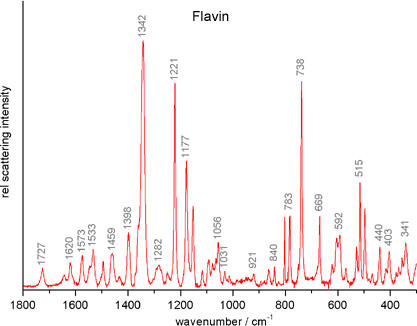Resonance Raman spectroscopy
With the resonance Raman technique the chromophore as part of the protein can be excited selectively and its vibrational transitions may be assigned to bands in the infrared spectrum of the whole protein. A laser beam excites the sample and the resulting stray light is analysed. This light consists mainly of the Rayleigh scattered laser beam, but contains also some shifted lines offset by an amount that corresponds to excited vibrational levels. The spectrum of these lines and their offset to the initial wavelength of the laser forms the Raman spectrum of a sample. When a ‘coloured’ sample is measured, the Raman signal can be greatly enhanced by using laser excitation near that wavelength. The other ‘classical’ Raman bands are much smaller and therefore not observable in the spectra.
